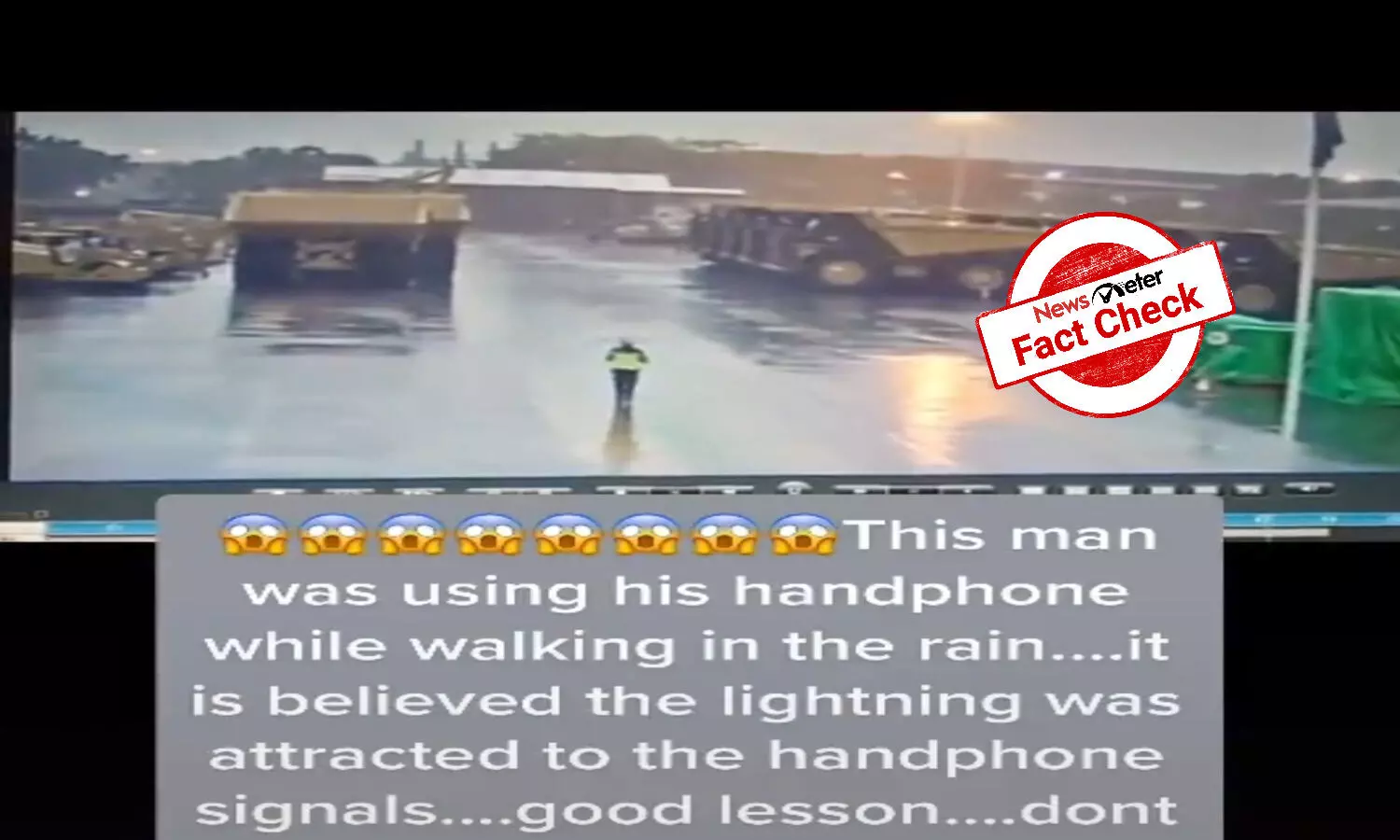Cell phone signals do not attract lightning, viral claims are false
A video of a man being struck by lightning has gone viral. Users claim that cell phone signals attract lightning.
By Newsmeter Network
Hyderabad: A video of a man being struck by lightning has gone viral. Users claim that cell phone signals attract lightning.
Click here to view the post.
Watch this. And be aware. pic.twitter.com/YQOD7QzOX6
— Kiran Bedi (@thekiranbedi) June 12, 2022
Fact Check:
The claim is false.
NewsMeter conducted Google reverse image search and found an article by Mirror."An umbrella being held by a security guard suddenly burst into a fireball and disintegrated after being struck by lightning. The man miraculously survived the incident, which was caught on camera, as he was struck and then collapsed……The victim was patrolling the depot with a radio transmitter and umbrella when the bolt of lightning zapped him in the open courtyard," the article said.
Further, we found that Professor Reynaldo Zoro (an expert in the field of lightning) said during an interview with Kompas, "cellphones or handy talkies do not cause a person to be struck by lightning. Because they have different frequencies." (translated version)
[PROF. DR. DIPL.-ING. IR. REYNALDO ZORO]
— TEDx ITB (@TEDxITBandung) May 9, 2018
This world-famous professor is a current lecturer in ITB at STEI. Prof Reynaldo Zoro's unprecedented
mastery in the field of lightning made him a regular at some of the most famous airports in the planet, and the "Master Petir"#tedxitb pic.twitter.com/zqNebi0nir
'National Weather Service' (National Oceanic and Atmospheric Administration - US) website categorizes 'cell phones attract lightning' as a myth. "Height, pointy shape, and isolation are the dominant factors controlling where a lightning bolt will strike," the article says. The presence of metal makes no difference in the location of lightning strikes. Mountains are made of stone, but they are struck by lightning numerous times per year...... While metal does not attract lightning, it does conduct it, so avoid metal fences, railings, bleachers, and so on.
https://www.weather.gov/
"Avoid using corded phones. Corded phones are NOT safe to use during a thunderstorm. However, cordless or cellular phones are safe to use during a storm," the 'Centers for Disease Control and Prevention (CDC) website said
Hence, the claim is false.